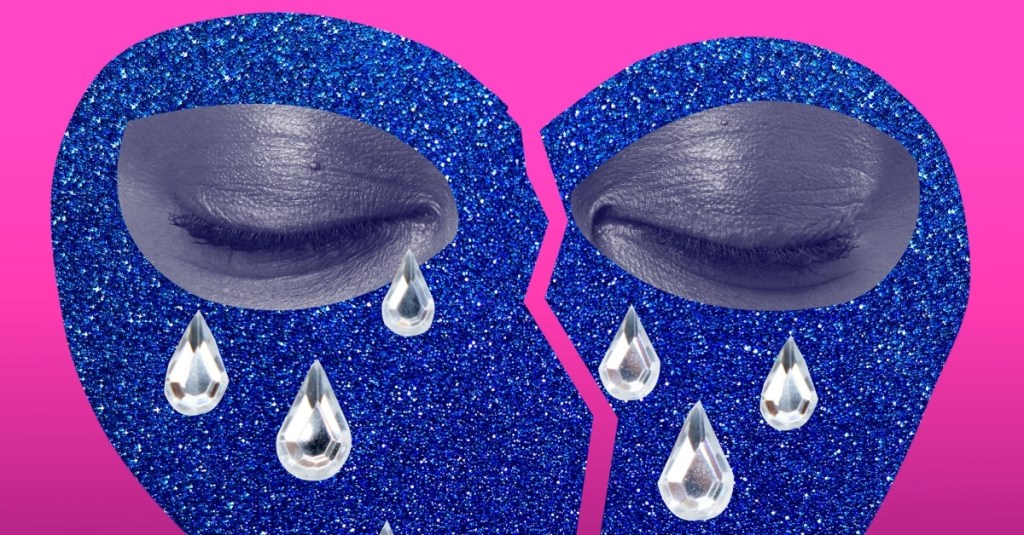When decaying materials get in the way of an artwork’s message, intervention becomes mandatory. And while any artwork warrants careful thought before actions are taken to conserve it, that seems doubly true with conceptual art, where the potential risk of inadvertently shifting the meaning of a work is even greater. That, in part, explains why the conservation of Janine Antoni’s self-portrait soap bust—which, paired with its chocolate counterpart, makes up her seminal Lick and Lather work—took years to treat at the Hirshhorn Museum.
Using detailed molds of herself, Antoni made several pairs of the busts in the early 90s, which are now in various collections. Once out of the molds, the artist licked the chocolate busts in several areas, and spent several hours bathing with each soap version, slowly washing away her own features. “The process is quite loving,” she told ART21 in 2003. “Of course chocolate is a highly desirable material, and to lick my self in chocolate is a kind of tender gesture. Having the soap in the tub was like having a little baby in there. But through that process, I’m slowly erasing my self. For me it really is about this kind of love-hate relationship we have with our physical appearance.”
Videos by VICE
The Hirshhorn acquired a version of the busts in 2001—and a few years later, the piece cast in soap began to exhibit problems. A powdery texture appeared across the surface, and it became clear that a replacement would be needed. “If the soap is so degraded that it’s all you’re seeing, and no longer paying attention to the meaning of the piece, then it’s no longer serving its function,” says Gwynne Ryan, chief conservator at the Hirshhorn, on a phone call with The Creators Project.

Conservator Gwynne Ryan mixing soap in the Hirshhorn conservation lab
Ryan arrived at the museum in 2009 and tackled the project with fresh energy. Through extensive conversations with the artist over five years, including several work sessions at Antoni’s studio, they traced the story of the soap back to its origins. They examined the original samples Antoni had commissioned from her soapmaker, and tried to recreate the problem by testing different recipes in various environments, exposing them to varying degrees of UV light and humidity. “Conservators geek out on materials,” comments Ryan, laughing, on a phone call with The Creators Project. “That’s one thing we have in common with artists: a love of materials.”

Soap samples for testing
Of all the samples tested, one of the soap maker’s original recipes proved to be very stable. Antoni still had several extra busts from those years in her studio, and was able to identify one that was made with that recipe. With a suitable replacement in hand, she got back in the tub.

Antoni’s self-portrait soap bust, after replacement. Photo by Cathy Carver
For Ryan, the process has completely reshaped how she approaches her role as a conservator: “When I first started out, I thought: You identify a problem, talk to the artist, go back and fix it. But we’re finding that these collaborations can span many years, where we’re often working side by side with the artists in looking for solutions.” For now, Antoni’s new, freshly lathered bust should be stable—at least for awhile. In the meantime, though, further experiments are afoot, and the museum’s collaboration with the artist forges on.

Antoni’s self-portrait soap bust, after replacement. Photo by Cathy Carver
To learn more about Janine Antoni’s Lick and Lather, you can read her interview with ART21 here. To learn more about conservation at the Hirshhorn Museum and Sculpture Garden, go here.
Related:
Should Perishable Art Be Saved? | Conservation Lab
How Replicas Could Save Threatened Artworks | Conservation Lab
More
From VICE
-

De'Longhi Dedica Duo – Credit: De'Longhi -

We Are/Getty Images -

Photo by tang90246 via Getty Images -

Credit: SimpleImages via Getty Images